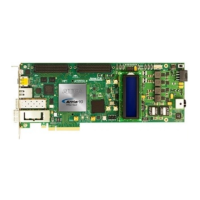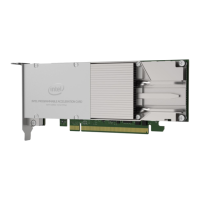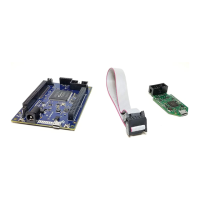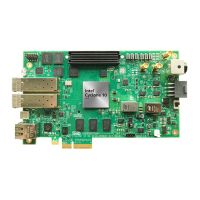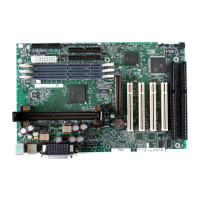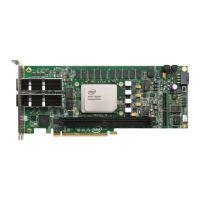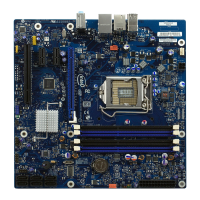Related Information
Refer to Specifications & Additional Information for more information about 8B/10B
encoder codes.
5.3.1.3.2. 8B/10B Encoder Reset Condition
The tx_digitalreset signal resets the 8B/10B encoder. During the reset condition,
the 8B/10B encoder outputs K28.5 continuously until tx_digitalreset goes low.
5.3.1.3.3. 8B/10B Encoder Idle Character Replacement Feature
The idle character replacement feature is used in protocols such as Gigabit Ethernet,
which requires the running disparity to be maintained during idle sequences. During
these idle sequences, the running disparity has to be maintained such that the first
byte of the next packet always starts when the running disparity of the current packet
is negative.
When an ordered set, which consists of two code-groups, is received by the 8B/10B
encoder, the second code group is converted into /I1/ or /I2 so that the final running
disparity of the data code-group is negative. The first code group is /K28.5/ and the
second code group is a data code-group other than /D21.5/ or /D2.2/. The ordered
set /I1/ (/K28.5/D5.6/) is used to flip the running disparity and /I2/ (/K28.5/D16.2/)
is used to preserve the running disparity.
5.3.1.3.4. 8B/10B Encoder Current Running Disparity Control Feature
The 8B/10B encoder performs a running disparity check on the 10-bit output data.
The running disparity can also be controlled using tx_forcedisp and tx_dispval.
When the PCS-PMA interface width is 10 bits, tx_forcedisp and tx_dispval are
one bit each. When the PCS-PMA interface width is 20 bits, tx_forcedisp and
tx_dispval are two bits each. The LSB of tx_forcedisp and tx_dispval
corresponds to the LSByte of the input data and the MSB corresponds to the MSByte
of the input data.
5.3.1.3.5. 8B/10B Encoder Bit Reversal Feature
Figure 257. 8B/10B Encoder Bit Reversal Feature
0 77
Bit Reversal Mode
(8B/10B Encoder)
0
Output
Data
Input
Data
The bit reversal feature reverses the order of the bits of the input data. Bit reversal is
performed at the output of the 8B/10B Encoder and is available even when the
8B/10B Encoder is disabled. For example, if the input data is 20-bits wide, bit reversal
switches bit [0] with bit [19], bit [1] with bit [18] and so on.
5. Arria 10 Transceiver PHY Architecture
UG-01143 | 2018.06.15
Intel
®
Arria
®
10 Transceiver PHY User Guide
484
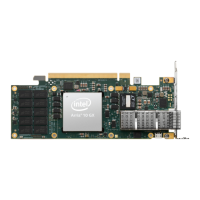
